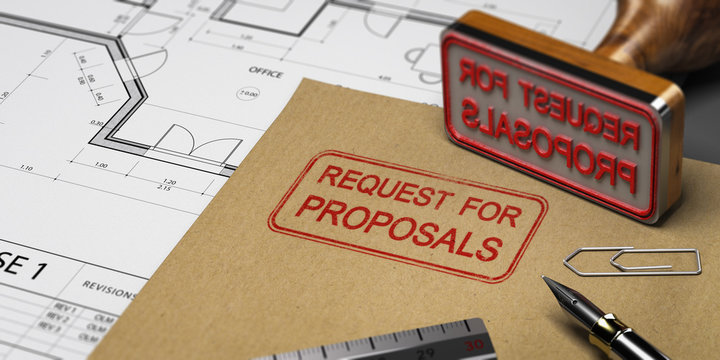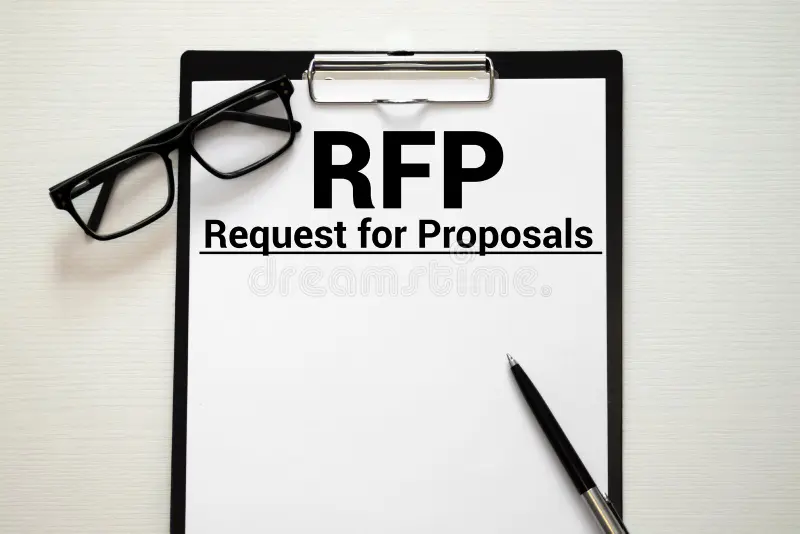In the world of business, a Request for Proposal (RFP) is an essential tool that helps companies to find potential partners or vendors. An RFP example email is a document that outlines the requirements and expectations of a company seeking proposals from potential vendors. This type of email serves as a guide for vendors to understand what the company needs, how it will be evaluated, and what the next steps are.
When creating an RFP example email, there are several critical components that must be included. These include a clear problem statement, an agitation of the issue, and a solution proposal. The problem statement should clearly state the issue or challenge that the company is facing, while the agitation section should highlight the negative consequences of not addressing the issue. The solution proposal should outline how the company plans to solve the problem.
When writing an RFP example email, it’s essential to use a recommended writing style that is clear and concise. This will help ensure that vendors can easily understand the requirements and expectations of the company. Additionally, using examples from DocuKng Quick can be helpful in providing guidance on how to structure the email.
To optimize an RFP example email, it’s important to consider ways to make it more effective. This includes ensuring that the email is well-organized and easy to read, using clear language, and avoiding jargon or technical terms that may be confusing to vendors.
Common questions in an RFP example email include requests for information about the company’s products or services, pricing details, and timelines. It’s important to anticipate these questions and provide clear answers in the email to help vendors understand what is expected of them.

| Sections | Topics Covered |
|---|---|
| Request for Proposal Example Email: Glossary of Vital Terms | Definitions and explanations of key terms used in a request for proposal email. |
| Request for Proposal Example and Critical Components | A detailed breakdown of the critical components required in a request for proposal email. |
| Request for Proposal Example Email: Recommended Writing Styles | Recommendations on the best writing styles to use when crafting a request for proposal email. |
| DocuKng Quick Examples Request for Proposal | Examples of how to quickly create and customize DocuKng documents using pre-built templates. |
| Ways to Optimize Request for Proposal Example Email | Tips and strategies for optimizing a request for proposal email to increase its chances of success. |
| Common Questions in Request for Proposal Example | Frequently asked questions and their answers related to request for proposal examples. |
Request for Proposal Example Email: Glossary of Vital Terms
Proposal: A detailed plan or offer that outlines the steps and resources required to complete a project or achieve a goal.
RFP: Request for Proposal, a document sent by an organization to potential vendors or contractors seeking proposals for a specific project or service.
Proposal Response: A written document submitted in response to an RFP, outlining the vendor’s plan and approach to complete the project or provide the service specified in the RFP.
Scope of Work: The specific tasks and deliverables required to complete a project, as outlined in the proposal response.
Bid: An offer or proposal submitted by a vendor in response to an RFP, detailing the cost and resources required to complete the project or provide the service specified in the RFP.
Evaluation Criteria: The criteria used by the organization to evaluate and compare proposals from potential vendors or contractors, such as cost, quality, and technical capabilities.
Contract: A legally binding agreement between an organization and a vendor or contractor outlining the terms and conditions of the project or service to be provided.
Amendment: A change or modification made to the original RFP, proposal response, or contract after it has been agreed upon by both parties.
Deadline: The date by which a project must be completed or a decision must be made, as specified in the RFP or contract.
Confidentiality Agreement: A legal agreement between an organization and a vendor or contractor to protect sensitive information shared during the RFP process.
Termination Clause: A clause in the contract that outlines the conditions under which either party can terminate the agreement, such as failure to meet deadlines or deliverables.
Request for Proposal Example and Critical Components
Proposals are a crucial tool for companies to showcase their capabilities and win over potential clients. An RFP is a specific type of proposal that is issued by an organization seeking bids from multiple vendors or contractors. An RFP typically includes a detailed description of the project, its requirements, and the evaluation criteria. It also outlines the timeline, budget, and other important details.
How to Write a Winning Request for Proposal
Organizations can increase their chances of receiving a winning proposal from vendors or contractors who are well-suited to meet their needs. It’s also important to carefully review each proposal and evaluate them based on the criteria outlined in the RFP.
A Request for Proposal (RFP) is a crucial document that outlines the project’s requirements and expectations. When it comes to writing an RFP response, it’s essential to follow specific guidelines and styles to ensure your proposal stands out from the rest.
Request for Proposal Example Email: Recommended Writing Styles
When crafting an RFP response, it’s important to choose the right writing style that aligns with your company’s brand and tone. Here are some recommended writing styles to consider:
- Formal: This style is appropriate when dealing with high-level executives or in formal settings. It should be concise, clear, and professional.
- Conversational: A conversational style can help build a rapport between your company and the client. It’s more relaxed than formal writing but still maintains a professional tone.
- Storytelling: This approach involves using storytelling techniques to engage the reader and make your proposal more memorable. It’s particularly effective when showcasing your company’s unique selling points or past successes.
When writing in a conversational style, it’s important to strike a balance between being friendly and professional. Use contractions and informal language where appropriate, but avoid using slang or overly casual phrases that could come across as unprofessional.
DocuKng Quick Examples Request for Proposal
Example Email:
Dear [Proposer],
We are writing to request a proposal from your company for the development of our new website. We have been impressed with your previous work in this field and believe that you would be the perfect fit for our project.
Please find attached a detailed description of what we are looking for, as well as some examples of similar projects you have completed in the past. We would appreciate it if you could provide us with a detailed proposal outlining your approach to this project, including timelines and estimated costs.
We look forward to hearing from you soon and hope that we can work together on this exciting new venture.
Sincerely,
[Your Name]
Ways to Optimize Request for Proposal Example Email:
When it comes to requesting proposals, there are a few key things you can do to optimize your email. Here are some tips to help you get started:
Be clear and concise in your message
Your email should be easy to understand and free of jargon or technical terms that may confuse the recipient. Make sure to clearly state what you need, how long you need it by, and who will be responsible for completing the task.
Provide all necessary information
Include any relevant details about your project, such as budget constraints or timelines, so that potential vendors can provide accurate proposals. The more information you provide, the easier it will be for them to create a proposal that meets your needs.
Use a professional tone
Your email should reflect the level of professionalism and respect you expect from potential vendors. Avoid using slang or informal language, and instead opt for a polite and courteous tone.
Personalize your message
Tailor your email to the specific vendor you are reaching out to. Research their company and find out what they specialize in, so that you can highlight how your project aligns with their expertise. This will help them understand why they should take the time to respond to your request.
Be clear about your requirements
Make sure to clearly state what you are looking for in a proposal. Are you looking for pricing, timelines, or specific deliverables? By being upfront about your requirements, you will make it easier for vendors to provide proposals that meet your needs.
Provide contact information
Include your name, phone number, and email address in case the vendor has any questions or concerns. This will also help them follow up with you if they are interested in submitting a proposal.
Use a clear subject line
Your subject line should be clear and concise, so that potential vendors can quickly identify what your email is about. Avoid using vague or generic subject lines, such as “Request for Proposal.” Instead, use a specific and descriptive subject line that reflects the purpose of your email.
Follow up if you don’t receive responses
If you don’t receive any responses to your request for proposals, it may be necessary to follow up with potential vendors. However, be sure to do so in a professional and respectful manner, and avoid coming across as pushy or demanding.
Consider using a proposal management software
Using a proposal management software can help streamline the request for proposal process. These tools allow you to create and distribute RFPs, collect proposals, and track responses in one central location. This can save time and reduce errors compared to manually managing the process.
Use clear and specific criteria
When evaluating proposals, it’s important to use clear and specific criteria to compare and contrast each proposal. This will help you make an informed decision about which vendor is the best fit for your project.
Provide detailed instructions for submitting proposals
Make sure to provide clear instructions on how vendors should submit their proposals, including any required formatting or submission methods. This will help ensure that you receive proposals in a format that is easy to review and compare.
Use a consistent tone throughout the process
From your initial request for proposals to your final decision, it’s important to maintain a consistent tone of professionalism and respect. This will help build trust with potential vendors and ensure that the entire process runs smoothly.
Common Questions in Request for Proposal Example:
How do you write a request for proposal?
To write a request for proposal, start by identifying the purpose and scope of your project. Then, clearly state your needs and requirements in detail. Next, outline the evaluation criteria and specify any relevant deadlines or timelines. Provide contact information for questions or clarifications. Remember to proofread and edit your document for clarity and professionalism.
What does an RFP proposal look like?
An RFP proposal typically includes a cover letter, project description, scope of work, pricing and payment terms, qualifications and experience of the proposer, and any relevant supporting documents. The proposal should be well-organized, clear, concise, and persuasive.
What is the standard request for proposal?
The standard request for proposal includes a detailed description of the project or service required, specifications and requirements, evaluation criteria, and instructions for submitting proposals. It may also include any relevant background information or context.
What is the difference between RFP and RFQ?
The main difference between an RFP (Request for Proposal) and an RFQ (Request for Quotation) is that an RFP is typically used when a buyer is seeking detailed proposals from multiple sellers, while an RFQ is used when a buyer is seeking simple price quotes from multiple sellers. An RFP may include more detailed information about the project or service required and evaluation criteria for selecting the best proposal.
